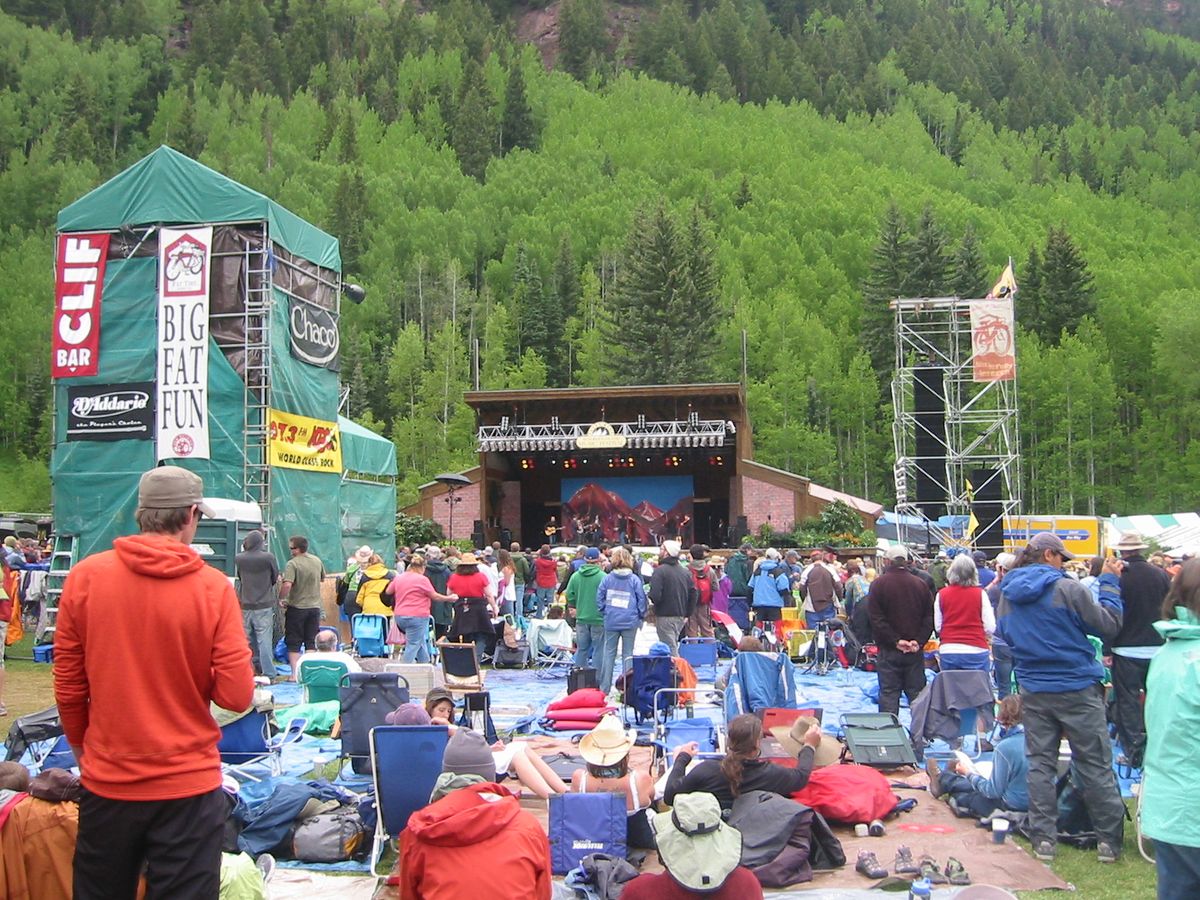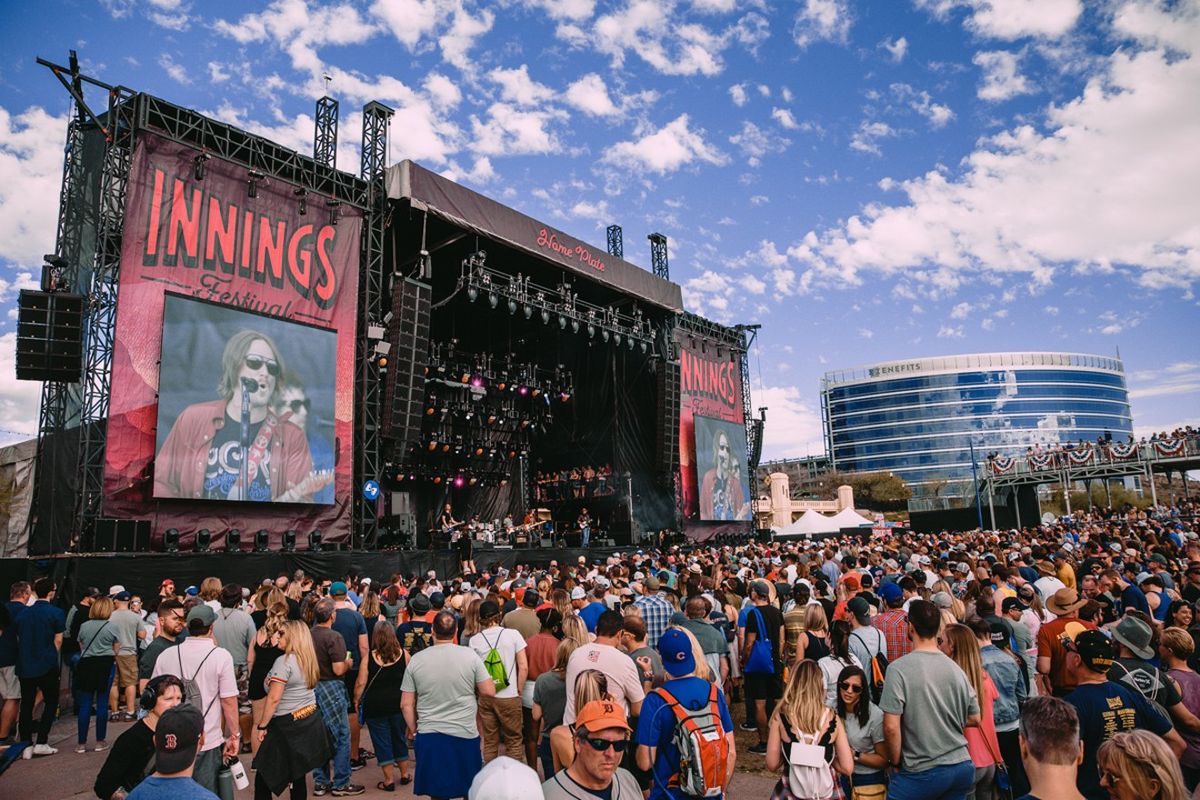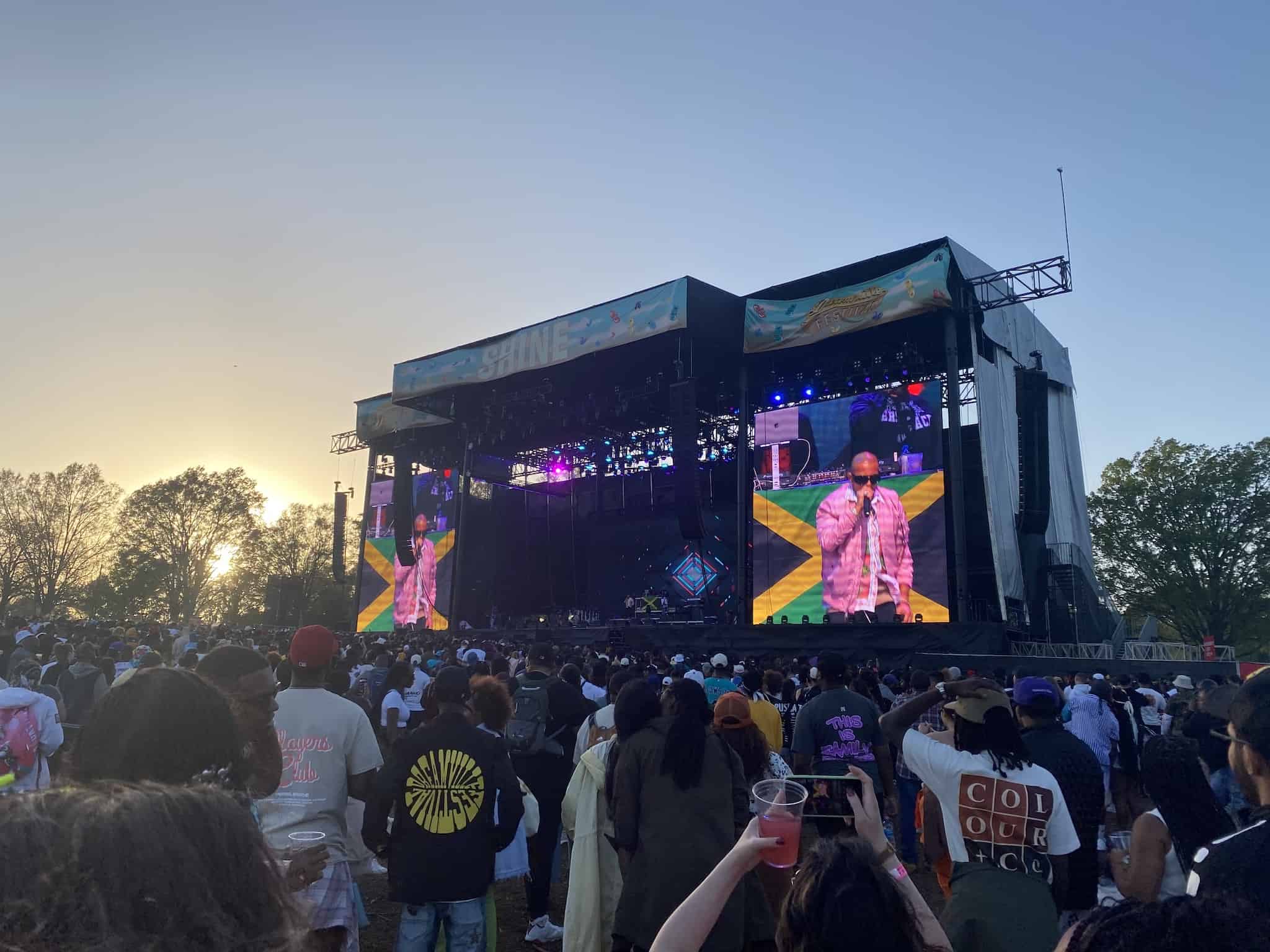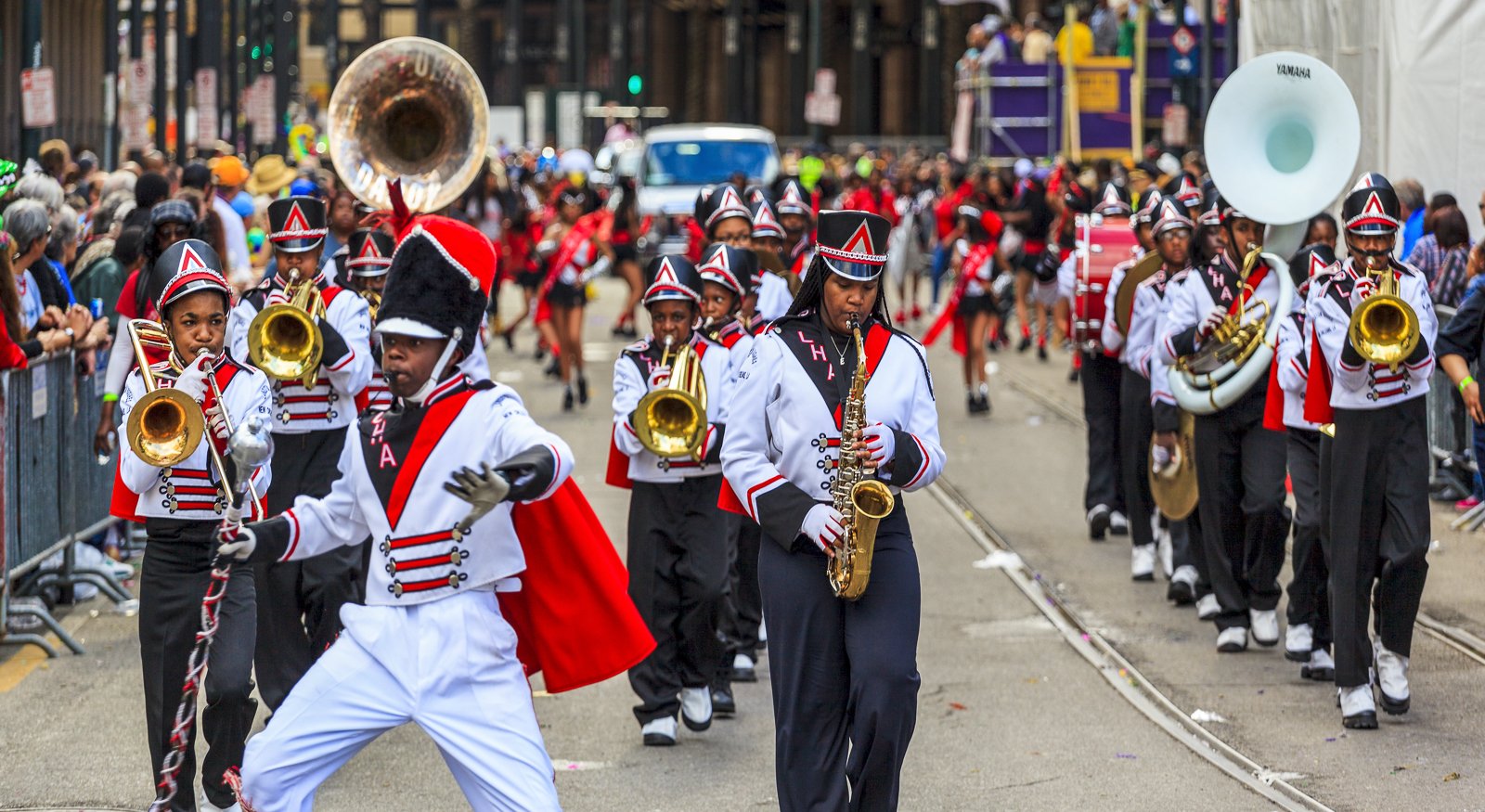Home>Events & Info>Festival>What Is A Bluegrass Festival


Festival
What Is A Bluegrass Festival
Modified: January 22, 2024
Discover the magic of a bluegrass festival. Immerse yourself in the vibrant music, lively atmosphere, and unforgettable experiences at this must-attend festival.
(Many of the links in this article redirect to a specific reviewed product. Your purchase of these products through affiliate links helps to generate commission for AudioLover.com, at no extra cost. Learn more)
Table of Contents
- Introduction
- Definition of Bluegrass Festival
- History of Bluegrass Festivals
- Characteristics of Bluegrass Music
- Importance of Bluegrass Festivals
- Popular Bluegrass Festivals
- Bluegrass Festival Lineup and Performances
- Activities and Attractions at Bluegrass Festivals
- Bluegrass Festival Culture and Community
- Impact of Bluegrass Festivals on Local Economies
- Conclusion
Introduction
Welcome to the world of bluegrass festivals! If you’re a fan of foot-stomping music, infectious melodies, and the rich traditions of American roots music, then you’re in for a treat. Bluegrass festivals offer a unique and immersive experience that celebrates the vibrant sounds and passionate performances of this beloved genre.
In this article, we’ll take a deep dive into the world of bluegrass festivals, exploring their definition, history, characteristics, and why they are so important to music lovers around the globe. We’ll also explore some popular bluegrass festivals, the lineup of performances you can expect, the activities and attractions available, and the impact these festivals have on local economies.
Bluegrass festivals provide a platform for both established and emerging artists to showcase their talent, while offering fans a chance to fully immerse themselves in the world of bluegrass music. From the high-energy performances to the jam sessions and camaraderie among attendees, there is something truly special about these events that keeps people coming back year after year.
So, whether you’re a lifelong fan or new to the world of bluegrass, get ready to strap on your boots, grab your banjo, and join us as we explore the captivating world of bluegrass festivals.
Definition of Bluegrass Festival
A bluegrass festival is an event that showcases the music, culture, and community surrounding the genre of bluegrass music. It brings together musicians, fans, and enthusiasts from all walks of life to celebrate and appreciate the unique sounds of this distinct style of American roots music.
Bluegrass music is characterized by its fast tempo, intricate instrumental arrangements, and tight vocal harmonies. It originated in the Appalachian region of the United States in the early 20th century and was popularized by legendary artists such as Bill Monroe, Lester Flatt, and Earl Scruggs.
At a bluegrass festival, you can expect to see a variety of performances, including traditional bluegrass bands, modern interpretations of the genre, and collaborations between musicians from different backgrounds. These festivals often feature multiple stages, allowing attendees to choose from a wide range of performances throughout the day.
The atmosphere at a bluegrass festival is vibrant and lively. It’s a place where musicians come together to share their love for the genre, collaborate on impromptu jam sessions, and showcase their skills. It’s also a place where fans can connect with like-minded individuals, immerse themselves in the music, and experience the sense of community that is intrinsic to bluegrass festivals.
Bluegrass festivals often incorporate other elements beyond the performances themselves. Workshops are commonly offered, where attendees can learn from experienced musicians and gain insights into the intricacies of bluegrass playing techniques. Additionally, there are often vendors selling instruments, merchandise, and food, as well as opportunities for camping and enjoying the great outdoors.
Overall, a bluegrass festival is an immersive experience that not only celebrates the music but also the spirit of camaraderie, tradition, and passion that defines the bluegrass community.
History of Bluegrass Festivals
The history of bluegrass festivals can be traced back to the mid-20th century when the genre started gaining widespread popularity. One of the pioneers of bluegrass music, Bill Monroe, played a crucial role in organizing the first-ever bluegrass festival in 1965, known as “Bluegrass Music Festival.” Held in Fincastle, Virginia, the event brought together several bluegrass artists and fans for a weekend of music and celebration.
Following the success of the initial festival, more and more bluegrass gatherings began to emerge across the United States. These festivals became a platform for artists to showcase their talent, and a haven for bluegrass enthusiasts to come together and revel in their love for the music. Over time, bluegrass festivals grew in scale and popularity, attracting a diverse audience ranging from dedicated fans to casual music lovers.
One of the most significant bluegrass festivals in history is the “Bean Blossom Bluegrass Festival,” which was started by Bill Monroe in 1967. Held annually in Brown County, Indiana, it has become one of the longest-running and most respected bluegrass events in the world.
Throughout the years, bluegrass festivals have played an integral role in the preservation, promotion, and evolution of the genre. They have provided a platform for established artists, emerging talents, and even young musicians learning their craft. These festivals have also helped sustain the traditions and heritage of bluegrass music through workshops, educational programs, and collaborative performances.
Bluegrass festivals have not only influenced the music scene but have also contributed to the cultural fabric of the communities where they are held. They have become an important part of local traditions and identities, drawing in visitors and revenue to bolster local economies.
Today, bluegrass festivals are held in various parts of the world, reflecting the global reach and appeal of the genre. From small intimate gatherings to large-scale multi-day events, these festivals continue to captivate audiences, showcase talent, and foster a sense of community among bluegrass enthusiasts.
The history of bluegrass festivals is a testament to the enduring power and popularity of the genre, as well as the unwavering dedication of the artists, fans, and organizers who have helped shape and preserve the bluegrass festival culture we know and love today.
Characteristics of Bluegrass Music
Bluegrass music is known for its distinctive sound and a set of defining characteristics that make it instantly recognizable. Understanding these characteristics can help you appreciate and differentiate bluegrass from other genres of music. Here are some key elements that contribute to the unique sound of bluegrass:
- Instrumentation: Bluegrass music is typically played on acoustic stringed instruments, such as the banjo, guitar, fiddle, mandolin, and upright bass. These instruments create the driving, rhythmic foundation and intricate melodies that are central to the bluegrass sound.
- Vocal Harmony: Bluegrass often features tight, three- or four-part vocal harmonies that add depth and richness to the music. These harmonies are sung by the band members, adding an additional layer of complexity to the arrangements.
- High-Energy Tempo: Bluegrass is characterized by its fast tempo, with songs played at a lively pace. The quick and intricate picking patterns on the instruments contribute to the high-energy feel of the music, creating a sense of excitement and momentum.
- Improvisation: Bluegrass musicians are known for their improvisational skills, taking turns to showcase their instrumental prowess through solos and intricate melodic variations. This element of improvisation adds spontaneity and creativity to bluegrass performances.
- Roots in Traditional Music: Bluegrass music has deep roots in traditional American folk and country music, particularly the music of Appalachia. It draws inspiration from old-time fiddle tunes, spirituals, and ballads, infusing them with a vibrant and modern energy.
- Driving Rhythm: Bluegrass music often features a driving and syncopated rhythm, usually played on the banjo or guitar. This rhythmic pulse provides the backbone of the music and sets the stage for intricate solos, vocal melodies, and harmonies.
- Storytelling Lyrics: Many bluegrass songs tell stories of love, loss, hardship, and the nostalgia of rural life. The lyrics often reflect the human experience, conveying heartfelt emotions and creating a connection with the listener.
- Instrumental Virtuosity: Bluegrass musicians are renowned for their technical proficiency and virtuosity on their respective instruments. They showcase their skills through impressive solos, intricate melodic lines, and lightning-fast fingerpicking.
These characteristics combine to create the distinct and captivating sound of bluegrass music. The interplay between the instruments, the harmonies, and the spirited performances make bluegrass a genre that is beloved by music enthusiasts and continues to influence and inspire musicians of all backgrounds.
Importance of Bluegrass Festivals
Bluegrass festivals play a significant role in the preservation, promotion, and appreciation of bluegrass music. These events hold immense importance for both artists and fans alike. Here are some key reasons why bluegrass festivals are so significant:
- Showcasing Talent: Bluegrass festivals provide a platform for both established and emerging artists to showcase their talent and gain exposure. It allows musicians to connect with a dedicated audience who appreciates the unique qualities of bluegrass music. By giving artists a stage to perform, festivals contribute to the growth and recognition of bluegrass as an art form.
- Fostering Community: Bluegrass festivals bring together a diverse community of musicians, enthusiasts, and fans who share a passion for the genre. These events create opportunities for people to connect, form friendships, and collaborate with like-minded individuals. The sense of community and camaraderie that develops at these festivals is invaluable, creating lifelong memories and relationships.
- Preserving Tradition: Bluegrass festivals play a crucial role in preserving the rich traditions and heritage of bluegrass music. Through performances, workshops, and educational sessions, they ensure that the techniques, songs, and cultural aspects of the genre are passed down to future generations. Bluegrass festivals serve as a living testament to the enduring artistry and cultural significance of bluegrass music.
- Encouraging Innovation: While bluegrass is rooted in tradition, festivals also provide a space for artists to push the boundaries and explore new sounds within the genre. This encourages innovation and experimentation, helping to evolve bluegrass music while maintaining its core essence. Bluegrass festivals serve as a platform for artists to showcase their unique interpretations and contributions to the genre.
- Educational Opportunities: Bluegrass festivals often include workshops and instructional sessions where attendees can learn from experienced musicians. These workshops offer a chance to delve deeper into the technical aspects of bluegrass music, learn playing techniques, and gain insights from industry experts. By providing educational opportunities, festivals contribute to the growth and development of bluegrass musicians and enthusiasts.
- Boosting Local Economies: Bluegrass festivals have a positive impact on local economies. They attract visitors from near and far, who spend money on accommodations, food, and other goods and services. Local businesses benefit from the increased foot traffic and tourism, stimulating economic growth in the region. Bluegrass festivals can also help promote local artists, artisans, and vendors, contributing to the overall cultural and economic vitality of the area.
In summary, bluegrass festivals are of great importance as they provide a platform for artists to showcase their talent, foster a sense of community, preserve the traditions and heritage of bluegrass music, encourage innovation, offer educational opportunities, and have a positive economic impact on local communities. These festivals are essential in keeping the spirit of bluegrass alive and ensuring its continued growth and appreciation for generations to come.
Popular Bluegrass Festivals
Bluegrass festivals are held all over the world, offering enthusiasts the opportunity to experience the vibrant sounds and contagious energy of this beloved genre. Here are some of the most popular bluegrass festivals that attract both renowned artists and passionate fans:
- MerleFest: MerleFest, held annually in Wilkesboro, North Carolina, is one of the most prestigious bluegrass festivals in the United States. Named in honor of musician Doc Watson’s late son Merle, the festival showcases a diverse lineup of established and emerging bluegrass, Americana, and roots music artists.
- Bean Blossom Bluegrass Festival: The Bean Blossom Bluegrass Festival is an iconic event that takes place in Brown County, Indiana. Founded by bluegrass legend Bill Monroe, this festival has been running since 1967 and has become a cornerstone of the bluegrass community, attracting top-notch talent from around the world.
- Grey Fox Bluegrass Festival: Located in Oak Hill, New York, the Grey Fox Bluegrass Festival is known for its exceptional lineup of bluegrass artists, workshops, and jam sessions. With a picturesque setting amidst the rolling hills of the Catskill Mountains, this festival offers an immersive experience for bluegrass enthusiasts of all ages.
- Telluride Bluegrass Festival: The Telluride Bluegrass Festival, held in Telluride, Colorado, is renowned for its breathtaking mountain backdrop and stellar lineup of bluegrass, folk, and Americana artists. This festival attracts music lovers from around the world who come to experience the magic of bluegrass in one of the most picturesque locations in the United States.
- International Bluegrass Music Association (IBMA) World of Bluegrass: The IBMA World of Bluegrass is an annual event that takes place in Raleigh, North Carolina. It features a week-long celebration of bluegrass music, including performances, awards shows, industry expos, workshops, and the famous Bluegrass Ramble showcasing up-and-coming talent.
- ROMP Festival: Located in Owensboro, Kentucky, the ROMP Festival celebrates the roots and branches of bluegrass music with a lineup that combines traditional bluegrass with progressive acts. The festival features performances, workshops, and a rich array of activities that make it a must-attend event for bluegrass enthusiasts.
These festivals, among many others, offer a diverse range of bluegrass music, showcasing the genre’s versatility and timeless appeal. Attending these events provides an opportunity to immerse oneself in the vibrant bluegrass community, experience incredible live performances, and create lasting memories in the company of fellow music lovers.
Bluegrass Festival Lineup and Performances
One of the most exciting aspects of attending a bluegrass festival is the lineup of performances that showcase the incredible talent within the genre. Bluegrass festivals curate a diverse range of artists, both established and emerging, to provide attendees with a captivating musical experience. Here’s what you can expect when it comes to bluegrass festival lineups and performances:
Headliners: Bluegrass festivals often feature renowned headliners who have made significant contributions to the genre. These artists are typically well-established in the bluegrass community and draw large crowds with their captivating performances. Their sets may include a mix of traditional bluegrass tunes, original compositions, and innovative interpretations of classic songs.
Up-and-Coming Artists: Bluegrass festivals are also known for providing a platform for emerging talent. These rising stars of the bluegrass scene bring fresh perspectives, new sounds, and innovative approaches to the genre. Discovering these up-and-coming artists is a highlight of attending a bluegrass festival, as you can witness their growth and development on stage.
Collaborations and Special Guest Appearances: Bluegrass festivals often create opportunities for unexpected and memorable collaborations between artists. Musicians from different bands may join forces on stage for impromptu jam sessions, showcasing their improvisational skills and creating magical musical moments. Special guest appearances by respected musicians outside of the bluegrass genre can also add a unique flavor to festival performances.
Variety of Bluegrass Styles: Bluegrass is a versatile genre, and a festival lineup reflects its diverse range of styles and subgenres. From traditional bluegrass to progressive bluegrass, old-time, and contemporary interpretations, the performances encompass a wide spectrum of sounds. This variety ensures there is something for every bluegrass fan, catering to different musical preferences and expanding the boundaries of the genre.
Instrumental Showcases: Bluegrass festivals often include instrumental showcases where individual musicians have the opportunity to shine. These showcases highlight the technical prowess of the artists, allowing them to demonstrate their skills through impressive solos and improvisation. It is in these moments that the intricate playing techniques and virtuosity of the instruments truly come to life.
Emerging Talent Competitions: Some bluegrass festivals feature competitions or showcases specifically dedicated to highlighting emerging talent. These competitions offer a platform for aspiring musicians to showcase their skills and gain recognition within the bluegrass community. It’s an exciting opportunity to witness the next generation of bluegrass musicians as they make their mark.
Overall, a bluegrass festival lineup is carefully curated to provide a diverse and captivating musical experience. Whether you’re a fan of traditional bluegrass, progressive interpretations, or exploring new sounds within the genre, attending a bluegrass festival ensures a memorable journey through the rich tapestry of bluegrass music.
Activities and Attractions at Bluegrass Festivals
Bluegrass festivals offer more than just incredible music performances. They provide a wide range of activities and attractions that add to the overall experience and make attending these festivals a memorable and immersive adventure. Here are some popular activities and attractions you can expect to find at a bluegrass festival:
- Workshops and Music Lessons: Bluegrass festivals often offer workshops and music lessons where attendees can learn from experienced musicians. These sessions provide opportunities to enhance your skills, learn new techniques, and gain valuable insights from experts in the field.
- Jam Sessions: Jamming is an integral part of the bluegrass culture, and festivals provide the perfect environment for impromptu jam sessions. Amateur and professional musicians alike gather in campgrounds or designated areas to share their talents, join in on the music-making, and experience the joy of spontaneous collaborations.
- Instrument and Equipment Vendors: Bluegrass festivals are a haven for musicians and enthusiasts looking to enhance their collection of instruments or gear. Festivals often have a marketplace or vendor area where you can browse and purchase a wide variety of instruments, accessories, merchandise, and music-related products.
- Food and Beverage Offerings: Bluegrass festivals are known for their delicious food options. From regional delicacies to classic festival fare, you’ll find a wide variety of culinary delights to satisfy your taste buds. Whether it’s a mouthwatering barbecue, freshly baked goods, or local food trucks, there’s something for everyone to enjoy.
- Arts and Crafts: Many bluegrass festivals have arts and crafts vendors showcasing handcrafted items, including jewelry, clothing, artwork, and more. Exploring the artisanal offerings adds a unique and creative dimension to the festival experience and provides an opportunity to support local artists.
- Children’s Activities: Bluegrass festivals often cater to families by offering special activities and entertainment for children. These may include face painting, storytelling, inflatables, games, and workshops designed to introduce young ones to the joy of music. It’s a great way to inspire the next generation of bluegrass enthusiasts.
- Outdoor Recreation: Many bluegrass festivals take advantage of their natural surroundings, providing opportunities for attendees to engage in outdoor activities. Whether it’s hiking, biking, fishing, or simply enjoying the scenic beauty, these festivals often offer a chance to soak in nature’s splendor.
- Camping and Community: Camping is a popular option at bluegrass festivals, allowing attendees to fully immerse themselves in the festival experience. Camping areas provide an opportunity to connect with fellow festival-goers, participate in late-night jams, and build a sense of community and camaraderie that extends beyond the music itself.
These activities and attractions contribute to the overall atmosphere and sense of community at bluegrass festivals. They provide opportunities for attendees to engage in a wide variety of experiences beyond just listening to music, ensuring that there’s something for everyone to enjoy and creating memories that last a lifetime.
Bluegrass Festival Culture and Community
Bluegrass festivals are more than just music events; they have fostered a rich culture and tight-knit community that sets them apart from other music festivals. The culture surrounding bluegrass festivals is characterized by a sense of camaraderie, shared passion for the music, and a welcoming atmosphere. Here’s a closer look at the vibrant culture and community found at bluegrass festivals:
Sense of Community: Bluegrass festivals are known for creating a strong sense of community among attendees. The shared love for bluegrass music brings people together, creating an inclusive environment where everyone feels like they belong. From jam sessions in the campgrounds to casual conversations over a meal, bluegrass festivals foster connections and friendships that can last a lifetime.
Jam Culture: Jamming is an integral part of the bluegrass festival experience. Musicians of all skill levels gather in informal settings to share their talents, learn from one another, and create spontaneous music. These jam sessions are often open to all, encouraging collaboration and a sense of musical unity among musicians and fans alike.
Celebration of Tradition: Bluegrass festivals pay homage to the rich traditions and heritage of the genre. They celebrate the pioneers, the classic songs, and the timeless styles that have shaped bluegrass music. Festivals often feature tributes and special performances dedicated to honoring the legends of the genre, ensuring that their contributions are celebrated and remembered.
Generational Connection: Bluegrass festivals provide a space where different generations come together. It’s not uncommon to see families attending, with children learning to play instruments, and multiple generations sharing a love for the music. This generational connection reinforces the importance of passing down bluegrass traditions to future generations and creates a multi-generational bond within the community.
Inclusivity and Collaboration: Bluegrass festivals embrace inclusivity and collaboration. Musicians of all backgrounds and levels of experience are welcomed, and there is a spirit of encouragement and support for all. Whether you’re a seasoned professional or a beginner strumming their first chords, bluegrass festivals provide a platform for artists to connect, learn, and grow together.
Vibrant Festive Atmosphere: Bluegrass festivals have a unique and vibrant atmosphere that sets them apart from other music events. From the spirited performances on stage to the lively jam sessions happening throughout the festival grounds, there is a palpable energy and excitement that infuses every moment. This festive atmosphere creates a sense of joy and celebration that is contagious.
Overall, the culture and community surrounding bluegrass festivals embody the essence of the genre itself: warm, welcoming, and rooted in tradition while embracing innovation. Attending a bluegrass festival is not just about the music; it’s immersing yourself in a community that shares a common passion and love for the rich heritage of bluegrass music.
Impact of Bluegrass Festivals on Local Economies
Bluegrass festivals have a significant impact on local economies, providing a boost to businesses, tourism, and overall economic vitality. These events attract visitors from near and far, generating revenue and creating opportunities for local businesses. Here’s a closer look at the impact of bluegrass festivals on local economies:
Tourism and Accommodations: Bluegrass festivals draw attendees from outside the immediate area, resulting in increased tourism. Visitors often seek accommodations in hotels, bed and breakfasts, or campgrounds, providing a direct boost to the local hospitality industry. Festivals can drive tourism during what might be considered the off-season, benefiting businesses that may rely on the revenue generated by event-related tourism.
Dining and Food Vendors: Bluegrass festivals create opportunities for local food vendors and restaurants to cater to hungry festival-goers. Local establishments often set up food stalls or trucks at the festival grounds, offering a taste of local cuisine or festival favorites. This benefits the local food industry, supporting businesses and stimulating economic growth.
Artisans and Merchandise: Many bluegrass festivals include artisan vendors selling handcrafted goods, artwork, and merchandise. These vendors provide a platform for local artisans to showcase their creations, contributing to the local arts and crafts economy. Purchases made at these vendors’ booths directly support local artists, fostering economic growth in the community.
Job Creation: Bluegrass festivals create temporary job opportunities, both in the planning and execution of the event. Local residents may find employment in festival operations, such as security, event staff, vendor management, or parking attendants. The additional employment opportunities provide a boost to the local job market and inject income into the community.
Local Business Support: Bluegrass festivals drive foot traffic to local businesses, such as stores, groceries, and gas stations, as festival-goers stock up on supplies and necessities. The increased patronage provides a welcome boost to these businesses, strengthening the local economy and supporting job retention and growth.
Long-Term Economic Impact: The impact of bluegrass festivals extends beyond the duration of the event itself. Festivals can enhance the reputation of a community as a cultural destination, attracting future tourists and fostering repeat visits. The positive experiences and memories created during the festival may lead visitors to return to the area in the future, benefiting local businesses in the long term.
Overall, bluegrass festivals have a noticeable impact on local economies by driving tourism, supporting local businesses, creating job opportunities, and boosting revenue in various sectors. The economic benefits extend beyond the festival duration, contributing to the overall growth and vitality of the communities that host these vibrant celebrations of bluegrass music.
Conclusion
Bluegrass festivals are more than just music events; they are celebrations of a genre deeply rooted in American history and tradition. These festivals bring together musicians, enthusiasts, and communities to revel in the rich sounds, vibrant performances, and sense of camaraderie that define bluegrass music.
Throughout this article, we have explored the various aspects of bluegrass festivals, from their definition and history to the characteristics of bluegrass music and the importance of these festivals in preserving and promoting the genre. We have highlighted popular bluegrass festivals, the diverse lineup of performances, the activities and attractions that enhance the experience, and the impact these festivals have on local economies.
Bluegrass festivals embody a culture that values community, inclusivity, and collaboration. They provide a space for musicians and fans to connect, share their talents, and create lasting memories. The festival atmosphere is electric, full of music, laughter, and a vibrant sense of togetherness.
Moreover, bluegrass festivals play a pivotal role in supporting local economies, stimulating tourism, and providing opportunities for local businesses, artisans, and vendors to thrive. They contribute to job creation, economic growth, and cultural vitality in the communities where they are held.
So, whether you’re tapping your foot to the driving rhythms, joining in on an impromptu jam session, exploring artisanal treasures, or simply enjoying the company of fellow music enthusiasts, bluegrass festivals offer an immersive experience that leaves a lasting impression.
As you immerse yourself in the world of bluegrass festivals, you become part of a larger community, one that cherishes the musical traditions, celebrates innovation, and embraces a shared love for the unique sounds of bluegrass. Whether you’re a longtime fan or a newcomer to the genre, attending a bluegrass festival is an invitation to be captivated by the magic, energy, and spirit of this truly remarkable musical celebration.











